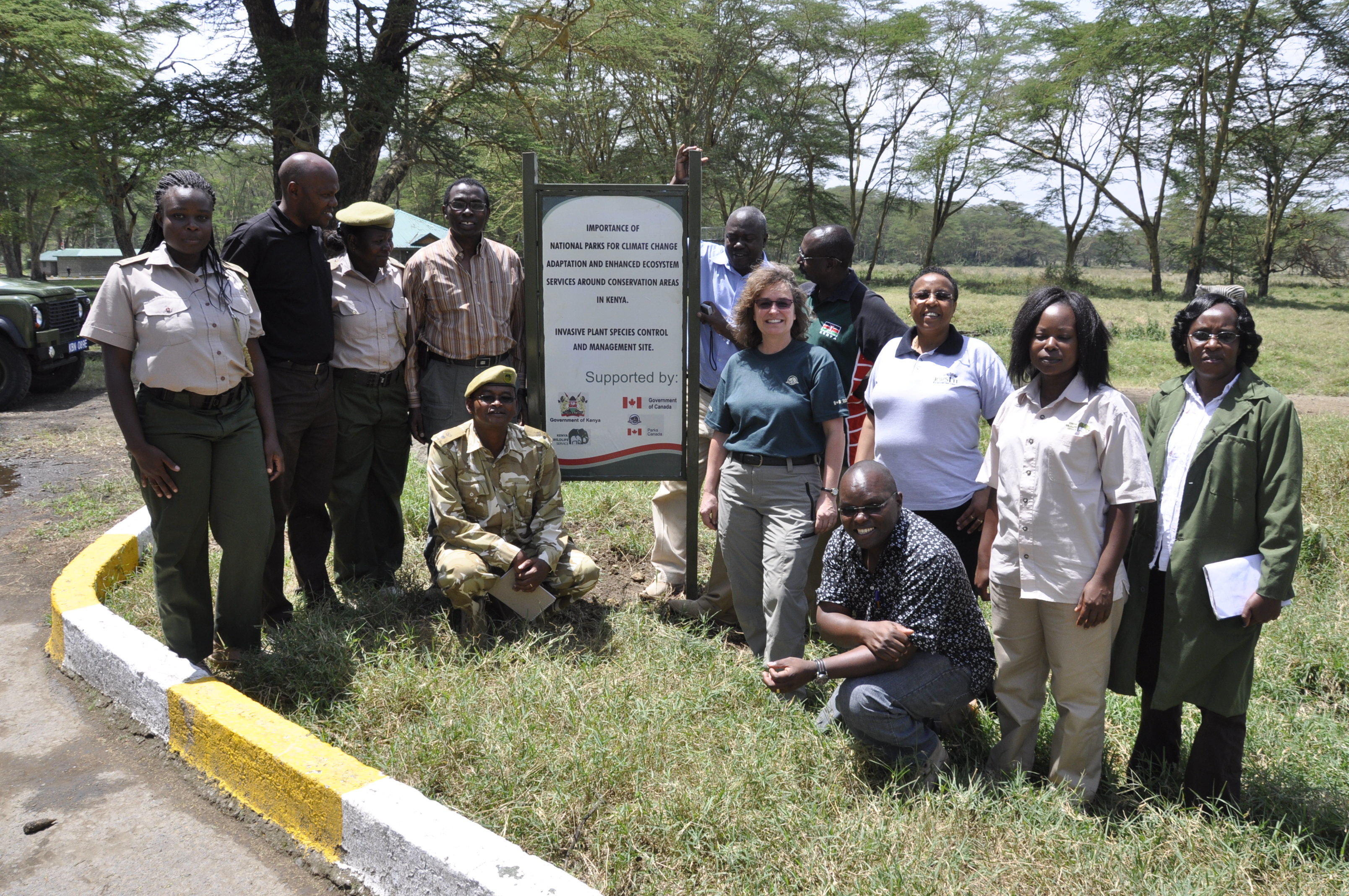Engaging diverse partners to address climate change impacts
Project implementation team in Lake Nakuru NP
Creating a strong collaborative partnership was an important success factor for this project. A management planning workshop held in July 2011 and attended by KWS scientists, planners and managers and facilitated by Parks Canada identified climate change as the most important conservation challenge facing Kenya’s national parks. Six parks heavily impacted by climate change were identified for adaptation intervention and appropriate initiatives determined for each one of them. The implementation strategy required the project to engage diverse partners drawn from the public and private sectors. Local communities, researchers, NGOs, park visitors, school groups, the tourism industry, health workers, youth and women groups associated with each park were consulted by KWS, briefed on the project’s goal of enhancing adaptation to climate change, and requested to participate in its implementation. KWS and Parks Canada provided scientific and technical support while other participants contributed professional skills, local knowledge, labor and enthusiasm. The Government of Canada provided funding through the Fast Start Climate Change Initiative.
• existence of a national climate change framework for Kenya was helpful in engaging stakeholders on issues of climate change impacts and the need for a societal response
• A strong and effective KWS community conservation programme facilitated outreach
• A formal partnership between KWS and Parks Canada executed through a Memorandum of Understanding facilitated acquisition of funds and provided an opportunity for sharing professional expertise to develop and implement broad scale adaptation interventions.
• Dialoguing with people to create the awareness of climate change impacts on livelihoods and the role protected areas can play to address them can promote their willingness to participate in adaptation interventions.
• Implementing intervention actions together with diverse groups helped to increase the awareness and understanding of climate change impacts, the benefits of protected areas and healthy ecosystems in addressing climate change threats, and the need for collective and individual action in mitigation and adaptation
• A partnership such as the one between Parks Canada-KWS can be a model for interagency collaboration for addressing global challenges
